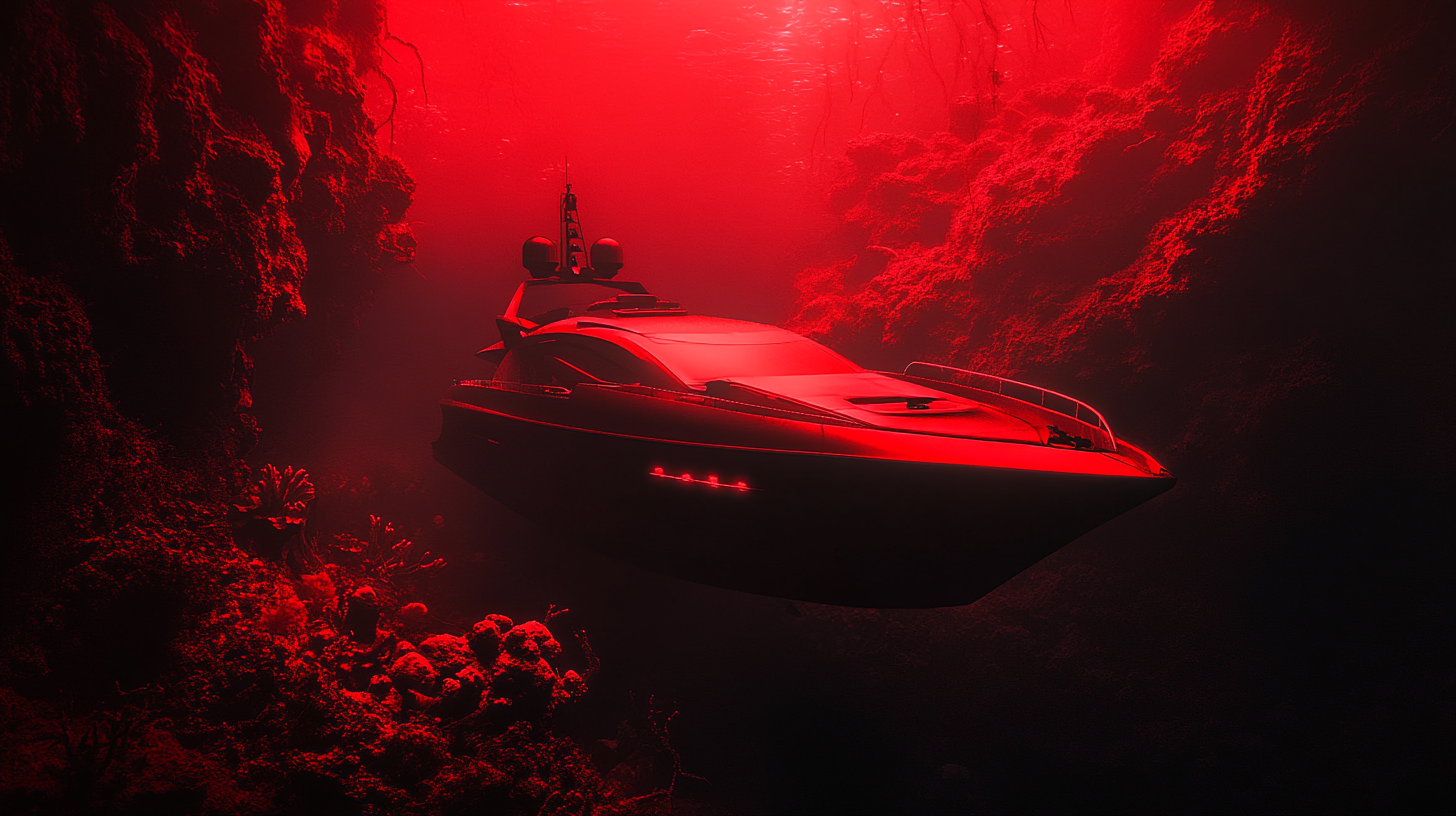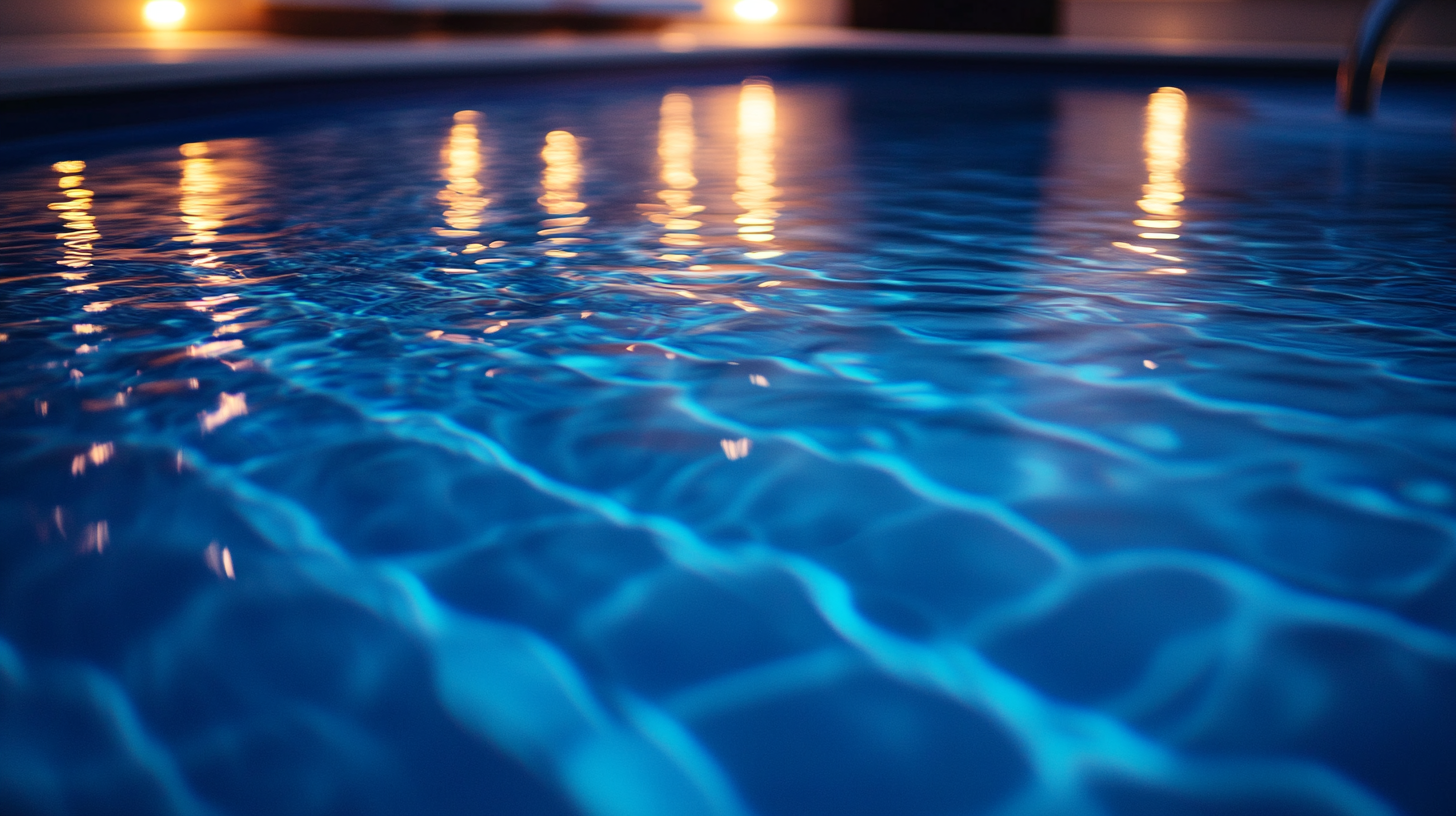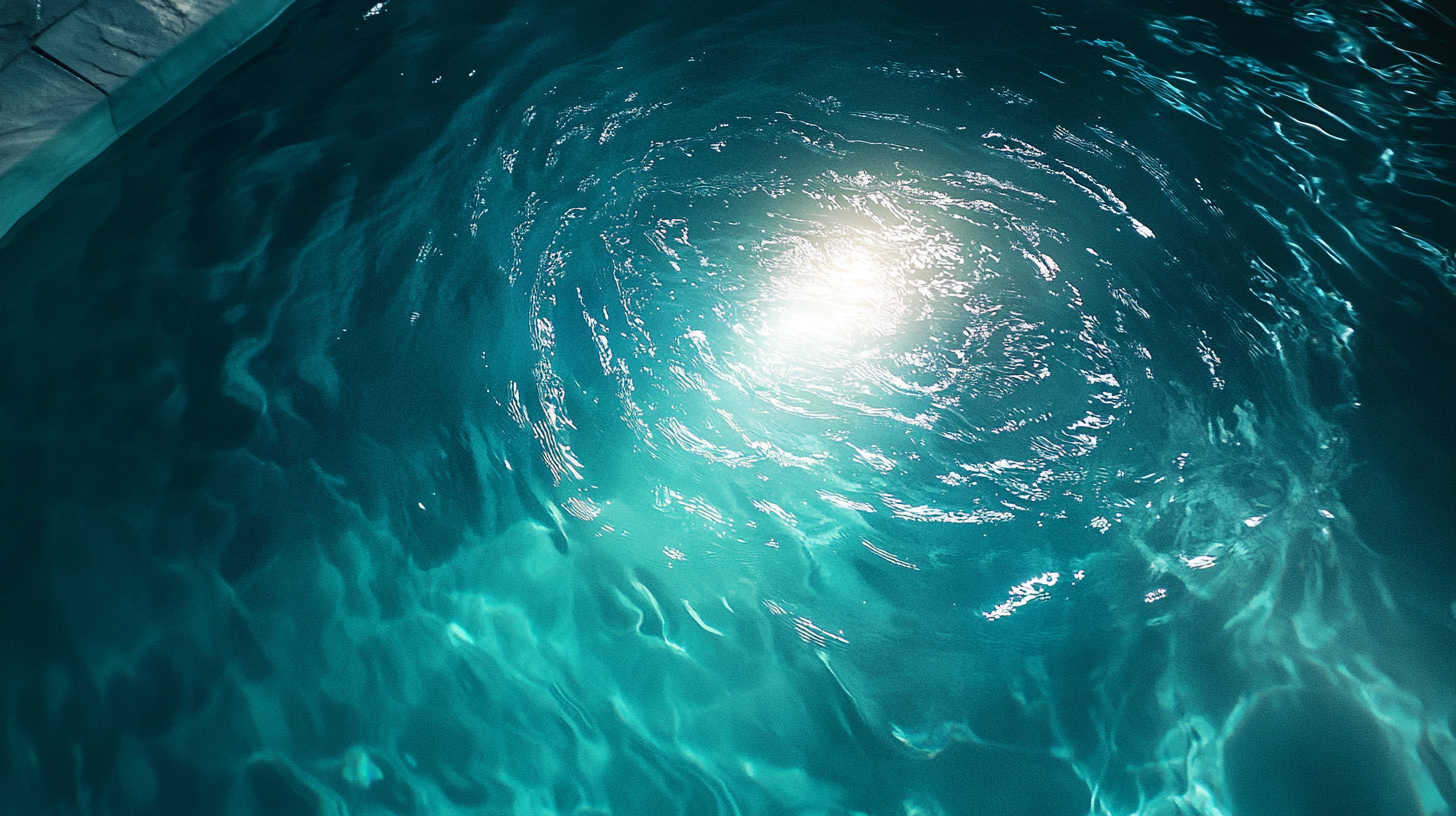What you need to know about infrared underwater boat lights
Infrared underwater lights are a relatively new advancement in the world of boating, offering unique capabilities that standard lighting systems can’t match. Unlike traditional options, which primarily focus on illuminating the water for visibility, infrared lights operate in a completely different wavelength of the light spectrum—specifically beyond what the human eye can perceive. This makes them perfect for boaters looking to use stealthy or discreet lighting in low-visibility or nighttime conditions.
One of the key things to understand is that while standard underwater lighting is designed to help you see, infrared technology works in conjunction with cameras or sensors to enhance your awareness of the underwater environment. These lights can easily penetrate murky waters and give more accurate insight through infrared-capable devices. In short, when paired with advanced boat tech, infrared helps in situations where people simply cannot rely on their own vision.
Because these lights are nearly invisible to the naked eye, they can also offer great benefits for night-fishing, allowing fishermen to spot aquatic creatures without creating any disturbance. Whether you’re curious about enhancing your boat’s visibility or just looking to take advantage of game-changing technology, the benefits of infrared for underwater use are worth exploring in your search for the best lighting guide.
Key benefits for boat owners
There are several powerful reasons why infrared underwater lights are becoming a must-have for boat owners. First and foremost, these lights can completely enhance your nighttime boating experience. Traditional underwater lighting often has the drawback of attracting unwanted attention—both from other boats and from marine life that may be spooked by bright lights in the water. With infrared lights, you get effective visibility through your boat tech without disturbing the environment because they operate in wavelengths that are invisible to the human eye. It’s like having a ninja on your boat—effective but stealthy!
For boaters involved in night-fishing, these lights are game-changers. Standard lights can easily frighten off fish, ruining what would otherwise be a successful evening on the water. Not so with infrared lighting. By using lights that are undetectable to fish, your chances of catching something increase. Plus, infrared lights paired with infrared-capable cameras or imaging systems can reveal the movement of fish and other marine life beneath the surface, giving boaters real-time insights into their surroundings with absolutely no disruption to the ecosystem.
An added benefit is the increased safety that these lights provide for nighttime navigation. Infrared light, while invisible to the naked eye, can work wonders when combined with advanced boat tech like infrared cameras or night vision equipment. These will allow you to spot potential hazards in the water, such as debris, shallow points, or even large marine animals that could otherwise go unnoticed in the dark. In high-traffic areas, this type of underwater lighting can be vital for preventing accidents.
Additionally, infrared lights consume far less energy compared to traditional lighting solutions. This means longer battery life and fewer fuel expenditures for those operating on generators or relying on solar power. Whether you’re planning on cruising through the night or just anchoring in a peaceful cove, this energy efficiency translates to longer, uninterrupted hours of operation—something every boat owner will appreciate. If you’re looking for efficient, eco-friendly lighting, these infrared systems should surely be on your guide to modern maritime tech.
Installation and maintenance tips
Installing infrared underwater boat lights might sound complicated, but with the right information and tools, it can be a straightforward task that transforms your boat’s functionality. The first step is selecting the proper placement for your lights. Think about areas where you need enhanced visibility—this could be around the hull, propeller, or underwater structures that you inspect frequently. Infrared lights work best when installed strategically so they can give you maximum coverage paired with infrared cameras or sensors, whether for navigation or night-fishing.
Next, keep in mind that the wiring system you use is critical. Since we’re dealing with underwater lighting, all cables and connections must be watertight to prevent damage and potential electrical hazards. Be sure to purchase marine-grade wiring and waterproof connectors designed specifically for boats. You may also want to coat the connection points with a marine sealant to ensure no moisture makes its way in. While this installation step may take a bit more time, it’s essential for the longevity of your lighting system and, of course, the safety of your boat.
When mounting infrared lights, consider using brackets specifically designed for underwater use. These help secure the lights firmly to the boat, reducing the risk of dislodgement due to water pressure or the bumps and scrapes that sometimes happen when docking. Often, you will have to drill holes in the boat’s hull, so it’s crucial to measure carefully before making any permanent modifications. A good guide is to align your lights with any cameras or sensors onboard so that their fields of view maximize the effectiveness of the technology. If you’re unsure, it’s worth consulting a professional installer or even following instructional manuals from the light manufacturer.
Once your infrared underwater lights have been installed, regular maintenance becomes key. The underwater environment can be tough on equipment due to saltwater, which can corrode metal and degrade materials. Regularly inspect your lights and their mounting components for signs of wear and tear. Cleaning them with fresh water and a mild soap will help remove any marine growth or grime that can obstruct light transmission. Believe it or not, even the best infrared lights can become less effective if they are masked by barnacles or algae growth.
For boat owners who frequently venture into saltwater areas, consider applying an anti-fouling solution to the lights. This will help prevent biological buildup and keep your lighting system running smoothly for longer periods. If your lights are integrated with an advanced boat tech system, keep firmware updated to ensure compatibility and optimal performance. Many infrared-capable cameras and devices receive updates that enhance their imaging capabilities, so you don’t want to miss out on any improvements.
Finally, take time to routinely check the power output to your lights. While these systems are designed to consume less energy, they should still be monitored for voltage fluctuations that could cause them to underperform or even fail. Additionally, periodic inspection of the control system that operates both the lighting and any associated infrared-capable cameras is essential. By following these installation and maintenance tips, you can fully enjoy the benefits your infrared underwater lights bring to your boating adventures, ensuring they’ll remain reliable and efficient for years to come.
Factors to consider before purchasing
When choosing infrared underwater boat lights, there are several important factors to consider that will impact both the performance of the lights and your experience on the water. First and foremost, it’s essential to understand what level of infrared visibility and range you will need. Depending on your use case—whether it’s night fishing, underwater inspection, or simply enhancing your underwater visibility—each model will vary in terms of its infrared intensity and throw distance.
Some lights are designed for shallow water use, where strong light penetration is less of a concern, while others are specifically manufactured to work efficiently in deeper or murky water conditions. This difference can be critical if you plan on using the lights in diverse aquatic environments. Along with evaluating the distance that the light can penetrate underwater, you should also confirm whether the lights are compatible with your existing boat tech, such as infrared-capable cameras or sonar systems, to maximize utility.
Another critical factor to take into account is power consumption. Infrared lights are generally more energy-efficient than traditional underwater lighting options, but there are still significant variances between models. Make sure the lights you choose are compatible with your boat’s electrical system, especially if you’re running off a generator, solar panels, or batteries. Check the listed wattage and compare it to the power output of your boat’s onboard system to avoid overloading it or cutting down battery life unexpectedly during your outings.
For those with battery-operated boats, it may be worth looking into how long a single charge will last with the lights on. High-intensity options, while powerful, may consume more electricity, so you’ll need to find a balance between performance and energy economy that best suits your needs. If energy efficiency is a priority, consider opting for lights that incorporate LED technology, which tends to offer lower power consumption alongside strong light performance.
Light durability is another major consideration, as infrared underwater lights are constantly exposed to harsh marine elements, including saltwater, UV rays, and extreme pressures depending on the depth they must endure. Look for lights that are marked with an IP68 waterproof rating or higher, ensuring they are fully submersible and resistant to water ingress over time. Materials matter here too—light housings made from marine-grade materials like stainless steel or bronze will ensure longevity, particularly in saltwater environments where corrosion is always a concern.
Another often overlooked factor is heat management. While infrared lights emit minimal visible light, they still produce heat, which can become a problem if not properly dissipated, especially in warmer climates or for boats exposed to the sun for extended periods. Lights that feature integrated heat sinks or thermal protection may prevent overheating and contribute to the longevity of the unit.
Next, consider the installation complexity of the lighting system you’re purchasing. Some lights are plug-and-play, requiring minimal effort to install, while others involve more complicated wiring and hull modifications, such as drilling holes that can affect your boat’s structure. If you’re uncertain about the installation process, you may want to seek professional assistance, especially for boats with advanced electrical systems. You should also take into account the mounting options provided with the lights. Are they meant to be flush-mounted or bracket-mounted? Ensure the mounting method suits your boat’s design to avoid any unforeseen issues post-purchase.
Lastly, budget constraints can have a significant influence on your choice of lights. Infrared underwater lighting systems can vary greatly in price depending on their features, materials, and build quality. Create a budget and stick to it, while considering the potential long-term cost savings offered by more energy-efficient and durable models. Often, opting for slightly more expensive lights made from superior materials or offering advanced features such as smart controls (e.g., remote-operated, dimmable, etc.) can save you a great deal of hassle and extra costs later on.
To provide a clearer outlook, here’s a comparison of two common categories of infrared underwater boat lights based on various factors:
| Feature | Basic Infrared Light | Advanced Infrared Light |
|---|---|---|
| Power Consumption | 10-30 W, average lifecycle ~5,000 hours | 5-15 W, average lifecycle ~25,000 hours (LED-based) |
| Material | Marine-grade plastic or anodized aluminum | Marine-grade stainless steel or bronze |
| Waterproof Rating | IP67 – Water-resistant, limited submersion | IP68 – Fully submersible, saltwater-resistant |
| Heat Management | Minimal/No heat dissipation features | Built-in heat sinks & thermal protection |
| Price Range | $50-$150 (varies by brand) | $200-$500 (varies by model) |
| Control Options | Basic on/off switch | Remote control, dimmable, smartphone-app connectivity |
Be sure to assess your specific needs against these considerations so you can confidently navigate the market and select the infrared underwater lights that best suit your boat and your frequently visited water environments.
Safety and environmental impact
When it comes to adding infrared underwater lights to your boat, safety and environmental impact are two crucial factors to consider. One of the main advantages of infrared lights is their ability to enhance safety without the drawbacks that traditional underwater lighting brings. Because infrared operates outside the visible light spectrum, they don’t contribute to light pollution in the ocean. Traditional underwater lights can cause glare, making it harder to see after dark and potentially disorienting other boaters. Infrared technology keeps your boat’s lighting profile discreet and non-intrusive, which can be particularly beneficial if you’re navigating in high-traffic or sensitive marine areas.
The discreet nature of infrared underwater lighting doesn’t just aid human safety—it can also reduce the disturbance to marine life. Standard lights can disorient or harm aquatic animals, disrupting their natural behaviors. Bright lights are known to attract fish, which might seem like a good thing, but they can also disorient marine animals like turtles and create an unnatural feeding environment for predators. Infrared lights, on the other hand, operate invisibly to marine life, meaning you can still get a clear view of your surroundings through infrared-capable cameras and sensors without causing distress to local ecosystems.
Another important aspect of safety is how well these lights integrate with modern boat technology. Infrared underwater lights paired with night vision cameras can help you see objects, debris, or even unlit boats that could pose a collision risk. Such a setup is particularly effective in busy marinas, narrow channels, or when traveling through low-visibility conditions like fog. With more accurate visibility through your boat tech, you’re less likely to encounter accidental collisions, which contributes to safer and more responsible boating practices overall.
On the environmental front, energy efficiency plays a key role in minimizing your boat’s footprint. Infrared lights use significantly less power than traditional underwater lights, reducing the overall energy consumption of your vessel. This is particularly impactful for boaters who rely on batteries, solar power, or generators to run their electrical systems. By consuming less power, you’re not only cutting down on fuel consumption but also reducing the environmental impact of fuel emissions. In this way, infrared lighting supports the broadening trend towards more eco-friendly boating practices.
It’s also worth noting that because infrared lights tend to produce far less heat than conventional lighting systems, they reduce the likelihood of thermal pollution. Thermal pollution occurs when lighting systems heat up the surrounding water, which can negatively impact the local aquatic environment. Traditional, high-powered lights may inadvertently raise the temperature of the water around your boat, which can alter the behavior of marine life or even harm delicate ecosystems like coral reefs. With infrared lights, this concern is minimized since they do not produce excessive heat, making them an environmentally safer choice.
Durability is another key factor in maintaining both safety and environmental responsibility. Inferior lights that wear out prematurely create waste, and when used in saltwater environments, they can corrode and impact the surrounding area. Quality infrared lights are built to withstand harsh marine conditions, extending their lifespan and reducing waste overall since you won’t need to replace them as frequently. Opting for marine-grade materials like stainless steel or bronze not only ensures durability but helps to prevent any stray debris from accumulating in marine environments due to corroding or deteriorating equipment.
So, when contemplating the installation of infrared underwater lighting, remember both the immediate safety benefits and the longer-term environmental implications. Choosing eco-conscious lighting options, properly installing them, and ensuring they fit into your boat’s overall tech systems will allow you to operate both safely and responsibly while on the water.


